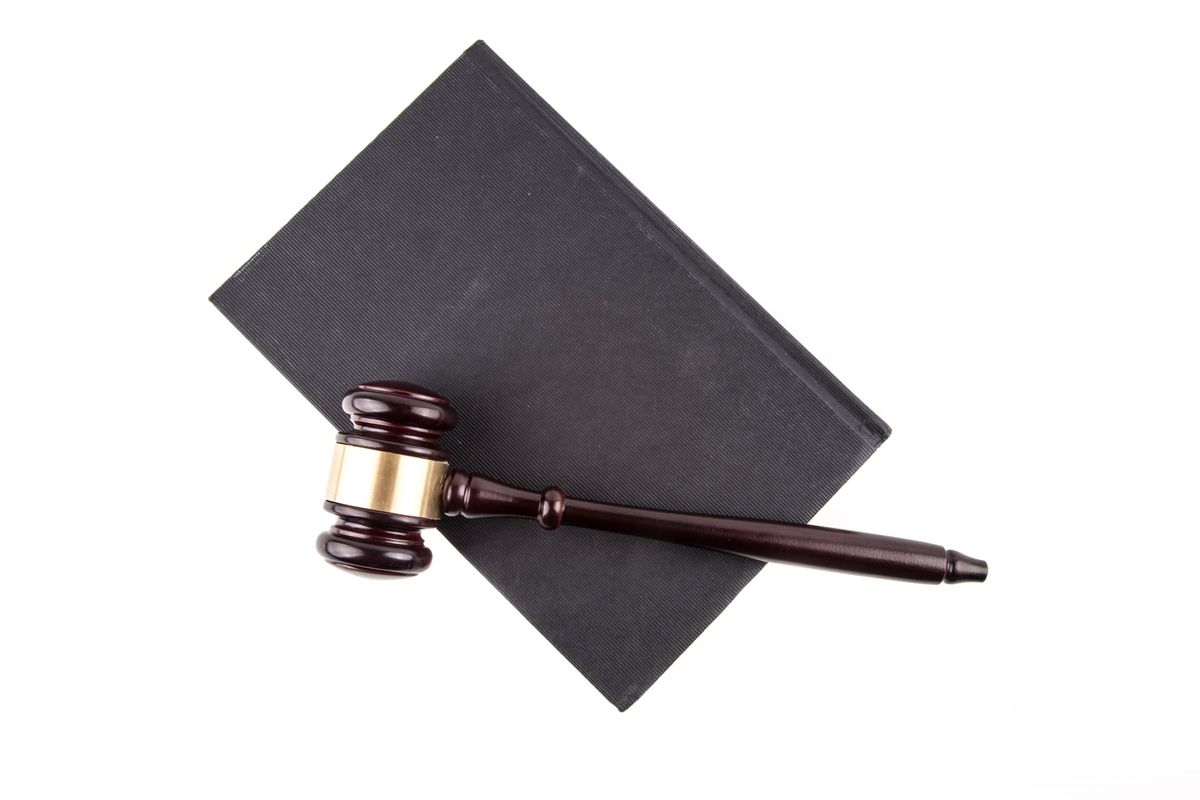In the competitive landscape of B2B litigation, firms often face the challenge of client non-payment, which can disrupt cash flow and impede business operations. Developing effective strategies to address unpaid claims is crucial for maintaining financial stability and ensuring that services rendered are compensated. This article delves into a multi-phased recovery system, evaluates the feasibility of litigation, explores various options available to litigation firms, discusses financial considerations, and outlines strategic communication and negotiation tactics to handle such scenarios.
Key Takeaways
- A three-phase recovery system provides a structured approach to address unpaid B2B claims, starting with initial contact and skip-tracing, escalating to affiliated attorneys, and concluding with a decision on litigation or case closure.
- Evaluating the feasibility of litigation involves investigating the debtor’s assets, assessing the likelihood of recovery, and determining the costs versus the benefits of legal action.
- Litigation firms have several options when facing non-payment, including withdrawing the claim without costs, continuing standard collection activities, or proceeding with legal action.
- Financial considerations for pursuing litigation include understanding upfront legal costs, analyzing collection rates and fees, and contingency planning for unsuccessful litigation outcomes.
- Strategic communication and negotiation tactics can enhance the chances of recovery, with attorney-drafted correspondence, persistent contact methods, and negotiating settlements pre-litigation playing key roles.
Understanding the Recovery System for Unpaid B2B Claims
Phase One: Initial Contact and Skip-Tracing
Within the critical first 24 hours, a multi-pronged approach is launched. Debtors receive the first of four letters, signaling the start of the recovery process. Concurrently, skip-tracing efforts are initiated to unearth the most current financial and contact information. The goal: to secure a resolution swiftly through persistent communication—calls, emails, texts, faxes.
- Daily contact attempts for 30 to 60 days.
- If unyielding, escalation to Phase Two is immediate.
The initial phase is a blend of diplomacy and investigation, setting the tone for the recovery endeavor.
Phase Two: Escalation to Affiliated Attorneys
When client non-payment escalates, B2B litigation firms must leverage their network of affiliated attorneys. Upon transfer, a local attorney drafts a demand letter, signaling a shift in tone and seriousness. The attorney’s letterhead adds weight to the demand, often prompting a response where previous attempts failed.
The affiliated attorney’s involvement marks a critical juncture in the recovery process, intensifying pressure on the debtor.
If persistent contact and demand letters do not yield payment, the firm faces a decision: proceed to litigation or close the case. This phase is pivotal, as it can lead to either resolution or the need for further action.
Rates for claims placed with an attorney are set at 50% of the amount collected, reflecting the increased effort and expertise involved. Firms must balance the potential for recovery against the costs and likelihood of success.
Phase Three: Decision on Litigation or Case Closure
At the crossroads of recovery efforts, firms must weigh the outcomes. If the debtor’s assets suggest recovery is improbable, the prudent step is to recommend case closure, incurring no fees. Conversely, should litigation appear viable, firms face a pivotal choice.
- Withdraw the claim, owing nothing.
- Continue with standard collection activities.
- Opt for legal action, accepting upfront costs.
Upfront legal costs are typically $600-$700, based on jurisdiction. These are essential for filing a lawsuit to recover all dues, including filing expenses.
In the event of unsuccessful litigation, the case concludes without further financial obligations to the firm or affiliated attorneys.
Our fee structure is clear-cut:
| Claims Quantity | Accounts < 1 Year | Accounts > 1 Year | Accounts < $1000 | Attorney-Placed Claims |
|---|---|---|---|---|
| 1-9 | 30% | 40% | 50% | 50% |
| 10+ | 27% | 35% | 40% | 50% |
The decision hinges on a balance of potential gain against the risks and costs of litigation.
Evaluating the Feasibility of Litigation
Investigating the Debtor’s Assets
Before proceeding with litigation, a meticulous investigation of the debtor’s assets is paramount. This step is not just about confirming the existence of assets but also about understanding their liquidity and encumbrances.
- Asset Types: Real estate, bank accounts, investments, and personal property.
- Liquidity: How quickly can the assets be converted to cash?
- Encumbrances: Are there liens or other claims on the assets?
A thorough asset investigation informs the feasibility of recovery and guides the decision on whether to litigate or close the case.
The goal is to paint a clear financial picture of the debtor. Without this, any legal action is akin to shooting in the dark. Strategic recovery systems are essential, especially when B2B litigation firms face the challenges of client non-payment. Addressing cash flow disruptions and legal costs is crucial for business operations.
Assessing the Likelihood of Recovery
Determining the probability of successful debt recovery is pivotal. Assess the debtor’s solvency; if assets are scarce, recovery may be a mirage. Consider the age of the account—older debts often signal diminished chances of collection.
- Debtor’s asset investigation: Essential first step.
- Age of the account: Influences recovery likelihood.
- Prior collection attempts: Reflect debtor’s payment behavior.
Weighing the debtor’s financial landscape against the age of the debt and previous collection efforts shapes the recovery strategy.
The decision to litigate hinges on a realistic recovery assessment. If prospects are bleak, case closure is advised, sparing unnecessary expenses. Conversely, palpable recovery potential justifies the costs of legal action.
Determining the Costs of Legal Action
Before proceeding with litigation, a clear understanding of the associated costs is crucial. Initial expenses such as court costs and filing fees are typically the first hurdle. These fees can range from $600 to $700, depending on the debtor’s jurisdiction.
The decision to litigate hinges not just on the potential for recovery, but also on the financial implications of the legal process itself.
In addition to upfront costs, consider the collection rates of the firm. For instance:
- Accounts under 1 year: 30% of the amount collected.
- Accounts over 1 year: 40% of the amount collected.
- Small accounts under $1000.00: 50% of the amount collected.
- Accounts requiring attorney involvement: 50% of the amount collected.
These percentages escalate with the age and complexity of the claim. It’s essential to weigh these collection rates against the expected recovery to ensure the pursuit is economically viable.
Options for B2B Litigation Firms When Facing Non-Payment
Withdrawing the Claim Without Costs
Opting out of litigation can be a strategic move. No fees owed if the claim is withdrawn; a clean break from a non-viable pursuit. Consider the opportunity cost of continued efforts versus cutting losses early.
- Initial assessment deems recovery unlikely
- No further financial obligations to the firm
- Freedom to redirect resources more effectively
Withdrawing a claim can be the most prudent decision when the likelihood of recovery is low. It allows for the reallocation of valuable time and resources to more promising endeavors.
Continuing Standard Collection Activities
When litigation is deemed too costly or uncertain, continuing standard collection activities remains a viable strategy. This approach involves persistent efforts to engage the debtor through various communication channels.
- Daily attempts to contact debtors for the first 30 to 60 days
- Utilization of phone calls, emails, text messages, faxes
- Sending a series of demand letters
Persistence is key in this phase. The goal is to maintain pressure and encourage voluntary payment without escalating to legal action.
Standard collection activities are a cost-effective alternative to litigation, offering a balance between recovery potential and legal expenses.
Collection rates vary depending on the age and size of the account, with fees ranging from 27% to 50% of the amount collected. This tiered structure incentivizes early and effective recovery efforts.
Proceeding with Legal Action
When the path of negotiation and standard collection fails, proceeding with legal action becomes a necessary step. This decisive move signals a firm’s commitment to recovering what is owed. Before embarking on this route, a clear understanding of the financial implications is crucial.
- Upfront legal costs are mandatory, typically ranging from $600 to $700.
- Filing a lawsuit includes the pursuit of all monies owed, plus filing costs.
- If litigation is unsuccessful, the case is closed with no further fees to the firm or attorney.
The decision to litigate is not taken lightly. It is the culmination of a strategic process that weighs the potential for recovery against the costs of legal action.
Collection rates vary, influenced by factors such as the age of the account and the number of claims. For instance, accounts under one year may incur a 30% fee on amounts collected, while older accounts or those under $1000 could see rates up to 50%. These fees are a vital consideration in the decision-making process.
Financial Considerations for Pursuing Litigation
Understanding Upfront Legal Costs
Before diving into litigation, B2B litigation firms must weigh the financial implications of upfront legal costs. Boldly confronting these expenses is crucial for a strategic approach to client non-payment. Upfront costs typically include court costs and filing fees, which can range from $600 to $700, depending on the debtor’s jurisdiction.
- Court Costs: $600 – $700
- Filing Fees: Included in court costs
These initial investments are the gatekeepers to the legal process. If the decision is to proceed, these fees are the first step in asserting your claim. However, should litigation efforts not result in recovery, firms face the reality of absorbing these costs. It’s a calculated risk that demands careful consideration.
Deciding to litigate? Prepare to invest upfront, but know that recovery is not guaranteed. Your firm’s financial health hinges on this pivotal choice.
Analyzing Collection Rates and Fees
When considering litigation, B2B litigation firms must scrutinize the collection rates and fees. Boldly assess the balance between potential recovery and the costs incurred. Collection rates vary, often contingent on the age and size of the account, and the number of claims.
- For accounts under 1 year: 30% (1-9 claims) or 27% (10+ claims)
- For accounts over 1 year: 40% (1-9 claims) or 35% (10+ claims)
- For accounts under $1000: 50% regardless of claim count
- For accounts placed with an attorney: 50% across the board
These percentages represent the portion of the collected amount that will be retained as fees. It’s essential to weigh these rates against the likelihood of successful recovery and the debtor’s ability to pay.
The decision to litigate hinges on a clear understanding of the financial implications, including collection rates and upfront legal costs. Firms must navigate the complex recovery processes with strategic systems in place.
Contingency Planning for Unsuccessful Litigation
When litigation does not yield the desired outcome, B2B litigation firms must pivot swiftly to mitigate losses. Develop a contingency plan to address potential non-recovery scenarios. This plan should outline alternative courses of action, such as revisiting negotiation strategies or exploring other avenues for dispute resolution.
Evaluate the financial impact of unsuccessful litigation carefully. Consider the sunk costs and the potential for further expenses should you choose to pursue additional legal avenues. A clear understanding of the financial landscape is crucial for making informed decisions moving forward.
- Review the case for possible appeal or alternative dispute resolution options
- Assess the viability of continued engagement with the debtor
- Determine if additional collection activities can be strategically employed
In the event of non-recovery, it’s essential to reassess the approach and refine strategies for future cases. Learning from setbacks can strengthen the firm’s position in subsequent B2B claims.
Strategic Communication and Negotiation Tactics
Leveraging Attorney-Drafted Correspondence
Attorney-drafted correspondence serves as a powerful tool in the recovery system for unpaid B2B claims. The mere presence of legal letterhead can prompt immediate action from a debtor, signaling the seriousness of the situation. This approach often leads to swifter resolutions, avoiding the need for more drastic measures.
- Initial attorney letters demand payment, clearly outlining the consequences of non-payment.
- Follow-up communications maintain pressure and demonstrate commitment to recovery.
- Customized letters address specific debtor circumstances, increasing the likelihood of a response.
By strategically using attorney-drafted letters, firms can enhance the effectiveness of their collection efforts, often leading to settlements without the need for litigation.
When considering the financial implications and the importance of efficient strategies, leveraging legal correspondence is a cost-effective method that can significantly impact the outcome of a collection case.
Utilizing Persistent Contact Methods
Persistence is key in debt recovery. Regular and varied contact ensures the debtor is aware of the seriousness of their situation. Use multiple channels—calls, emails, texts, and faxes—to maintain pressure and visibility.
Consistent follow-up can signal determination to recover the debt, potentially prompting a quicker resolution.
- Daily attempts in the initial phase
- Escalation to attorney-drafted letters
- Persistent, professional communication
Remember, each contact is an opportunity to negotiate and potentially settle the debt before escalating to litigation.
Negotiating Settlements Pre-Litigation
Before the gavel falls, negotiation is key. Settling claims before litigation can save time and resources. It’s a strategic pivot, turning potential courtroom battles into boardroom agreements.
- Assess the debtor’s willingness to negotiate; some may prefer a quick settlement over a protracted legal fight.
- Calculate a realistic settlement amount that reflects the debt’s age and size, ensuring it’s attractive to both parties.
- Draft a clear settlement agreement, outlining payment terms and legally binding conditions.
In the shadow of the courthouse, a well-negotiated settlement is often the most prudent path forward.
Remember, a settlement isn’t just about recovering funds; it’s about preserving business relationships and setting a precedent for future interactions. Weigh the pros and cons carefully, and always keep the door open for negotiation.
Mastering strategic communication and negotiation is crucial in the complex world of debt collection. At Debt Collectors International, we specialize in dispute resolution, skip tracing, and judgment enforcement to ensure you get the results you need. Our experienced team is ready to serve you across various industries, providing unparalleled results and performance. Don’t let outstanding debts disrupt your business—take the first step towards recovery. Visit our website to learn more about our services and how we can assist you in collecting what is rightfully yours.
Frequently Asked Questions
What happens during Phase Three if the possibility of recovery is deemed unlikely?
If after a thorough investigation it is determined that recovery is not likely, we will recommend closure of the case. You will owe nothing to our firm or our affiliated attorney for these results.
What are my options if litigation is recommended but I decide not to proceed?
You have the option to withdraw the claim without any costs, or you may choose to continue with standard collection activities such as calls, emails, and faxes.
What upfront legal costs are required if I decide to proceed with litigation?
You will be required to pay upfront legal costs which typically range from $600.00 to $700.00, depending on the debtor’s jurisdiction. These costs cover court costs, filing fees, etc.
What happens if attempts to collect via litigation fail?
If our attempts to collect via litigation fail, the case will be closed, and you will owe nothing to our firm or our affiliated attorney.
How are collection rates determined?
Collection rates are competitive and tailored, depending on the number of claims and other factors such as the age of the account and the amount owed. Rates can vary from 27% to 50% of the amount collected.
What initial steps are taken within 24 hours of placing an account for recovery?
Within 24 hours of placing an account, we send out the first of four letters, skip-trace and investigate debtor information, and our collector begins attempts to contact the debtor using various methods, with daily attempts for the first 30 to 60 days.





